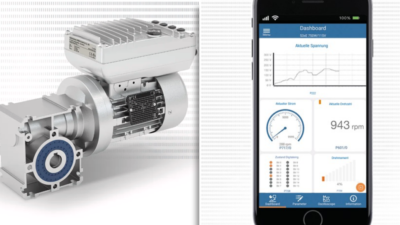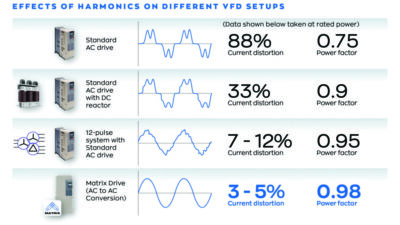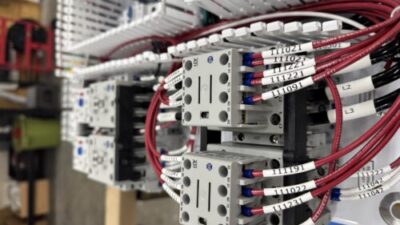D iesel engines power the equipment that transports people and goods around the world. For more than 50 years, Detroit Diesel Corp. has built heavy-duty engines for transportation, construction, industrial, and military applications.
The company retooled its Series 60 assembly line in Redford, Mich. The line’s centralized relay control system with manually operated dc drives was replaced with distributed I/O system controlled by PC-based Asic-100 software from ASAP Inc. (Chagrin Falls, O.).
Homer Shepherd, manufacturing consultant to Detroit Diesel, explains, ‘The primary objectives were improved quality control and documentation. We wanted a system that monitored gages, nut runners, air test, and oil fill. If an ‘accept’ command from any operation is not received, the line could be stopped. Previous checks and documentation were made manually.”
Communications improved At the start of a shift, a foreman enters desired line speed expressed as the number of engines to be produced and planned stoppage times for lunch and breaks. The program calculates the required conveyor speed in inches per minute. Seven operator interfaces along the line display system parameters and permit operators to call for materials, call the foreman, or stop the line. An Interbus network is used to communicate to more than 1,000 discrete I/O points.
Asic-100 also communicates with the mainframe computer via TCP/IP using custom Visual C++ drivers. A build book is sent from the mainframe for each engine loaded on the line. RF scanners track each engine through the process sending data to the controller database. Operating parameters, station performance, line monitoring, and fault recording are all captured for the database.
According to Mr. Shepherd, ‘The major advantage of PC-based control is savings in development time and hardware costs. Ease of programming and drag-and-drop editing among other features makes it easy to create or revise control programs. Development time was three months, compared to a usual six months.”
Not only did Detroit Diesel realize its goals of improved quality control and documentation, it also realized productivity gains. These benefits led it to implement another PC-based system on a new line.
Comments?E-mail [email protected]



